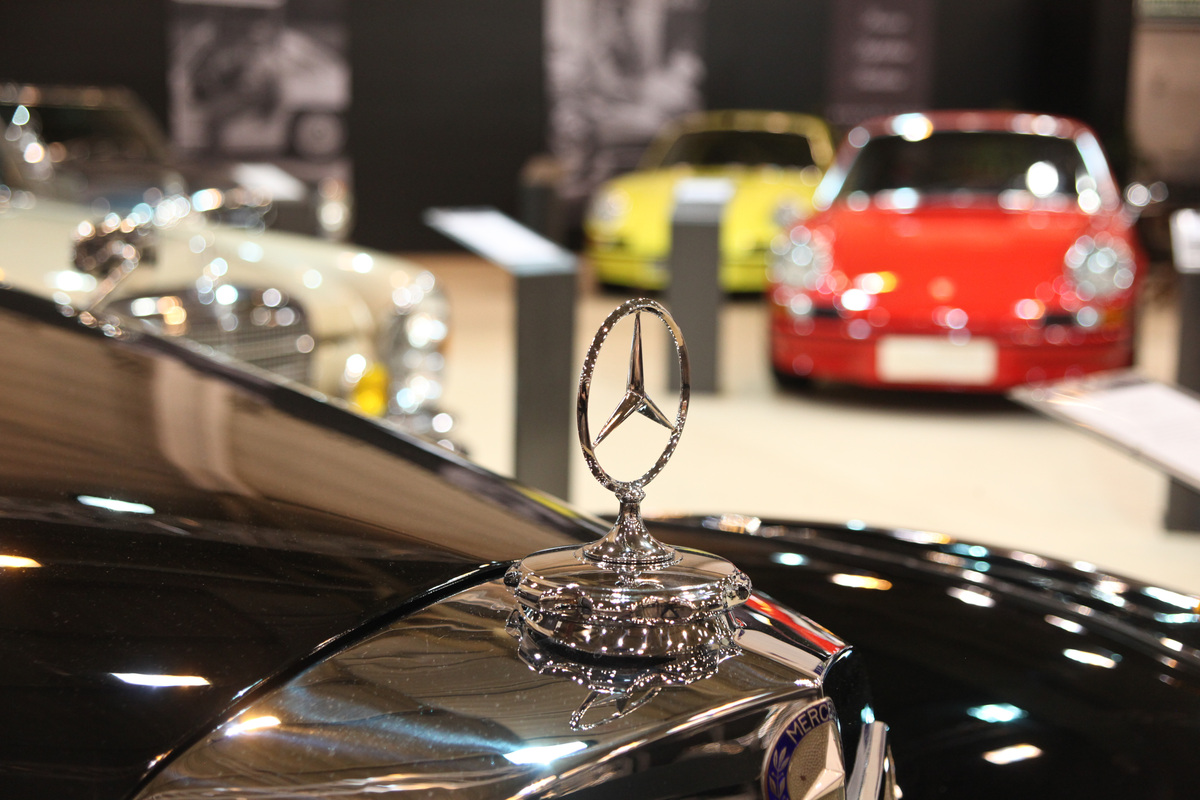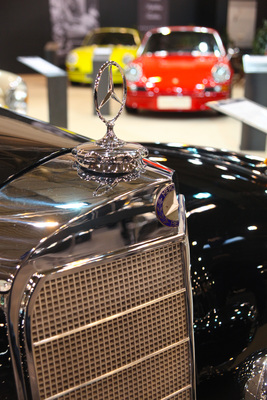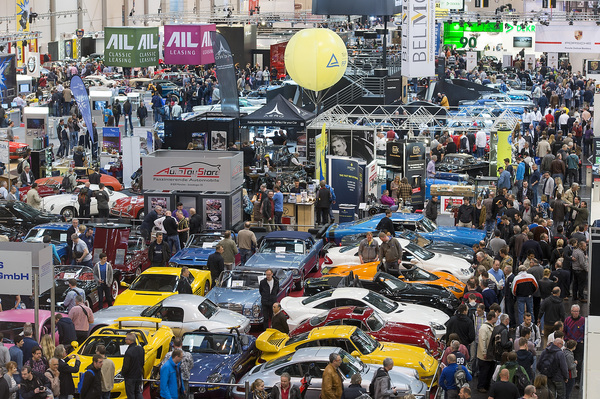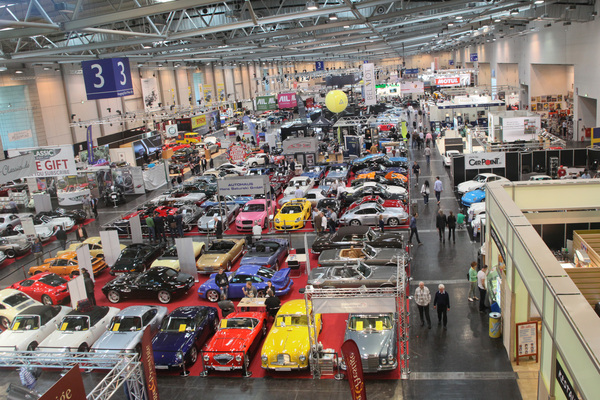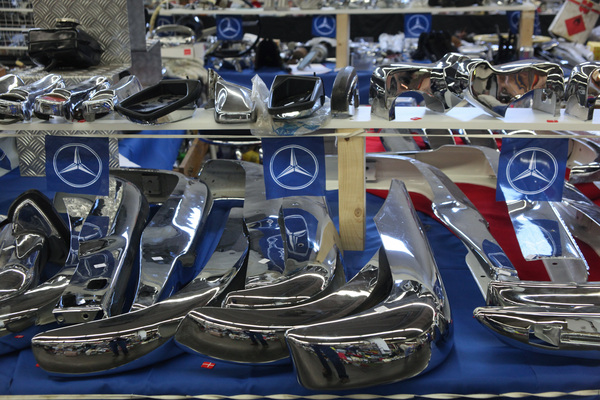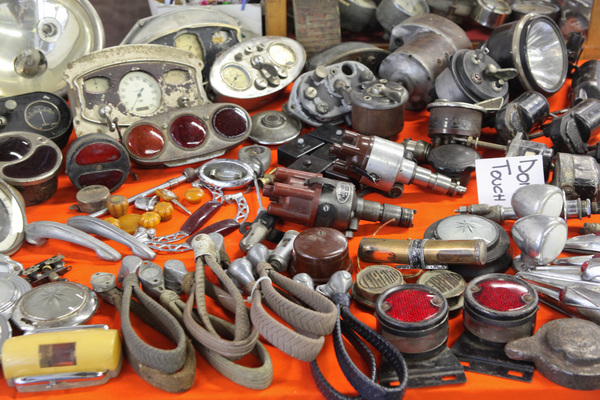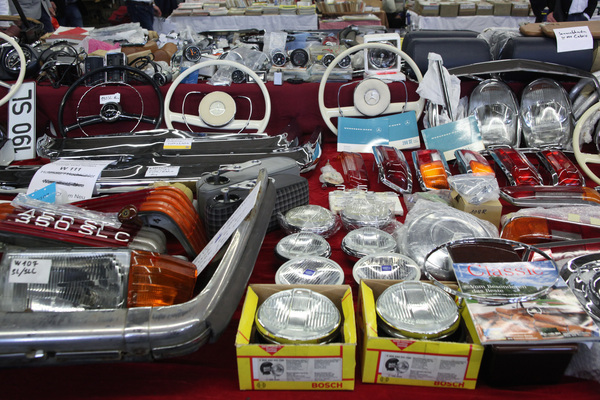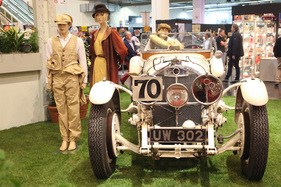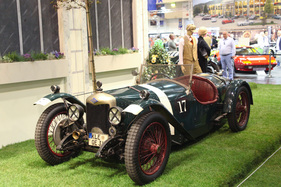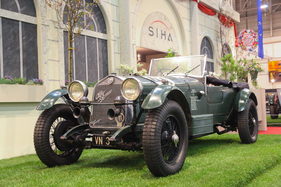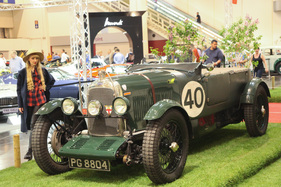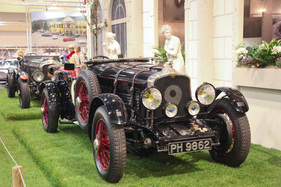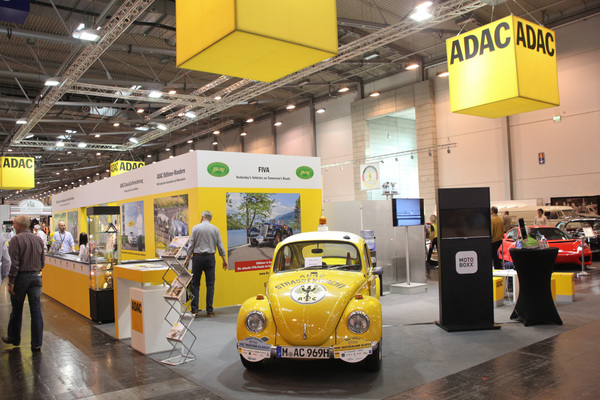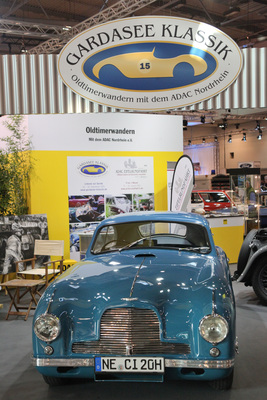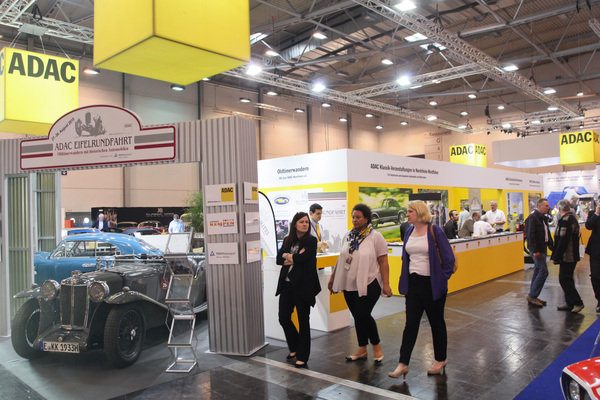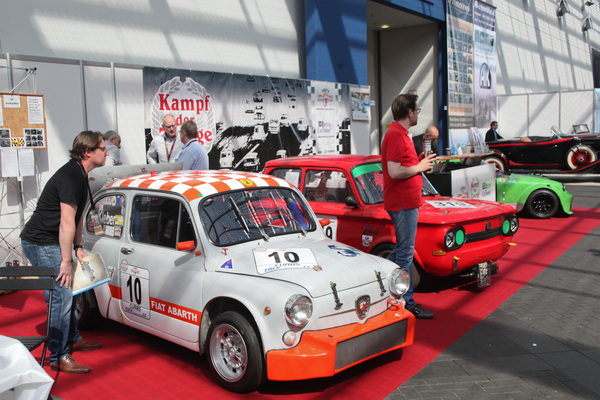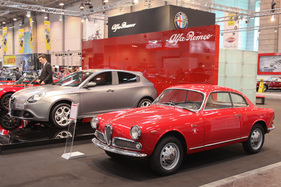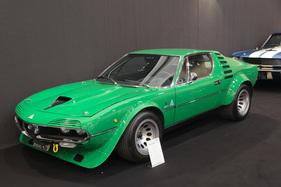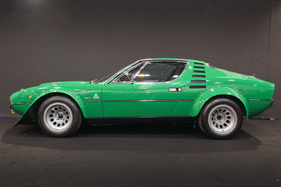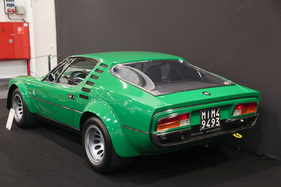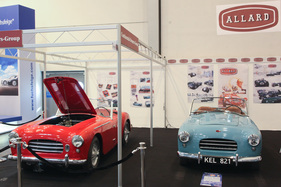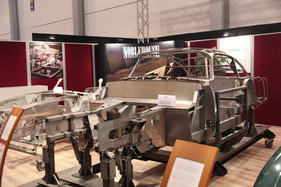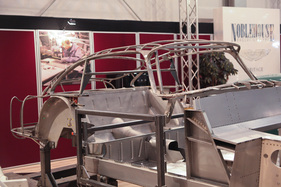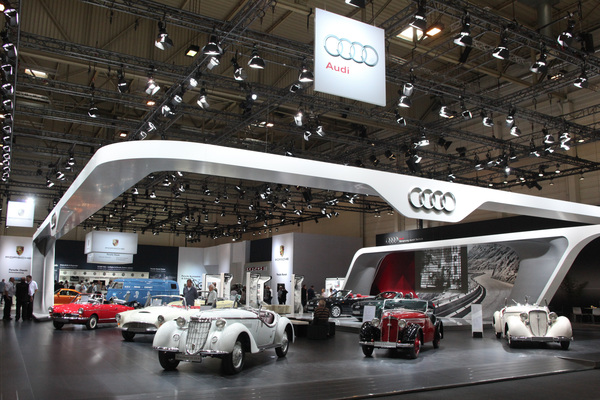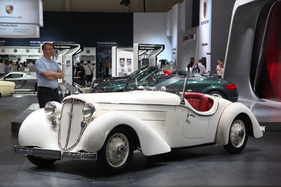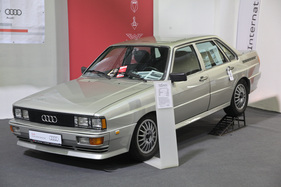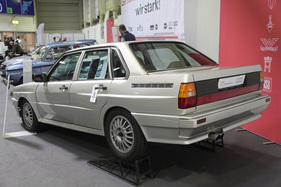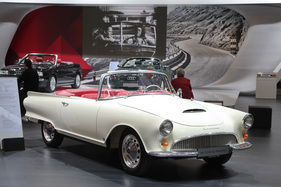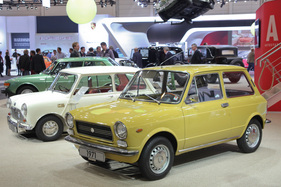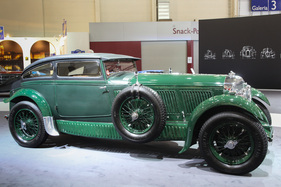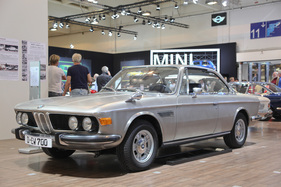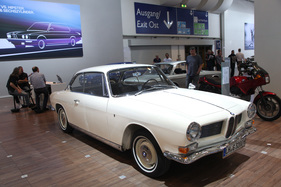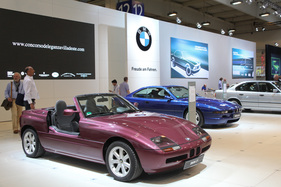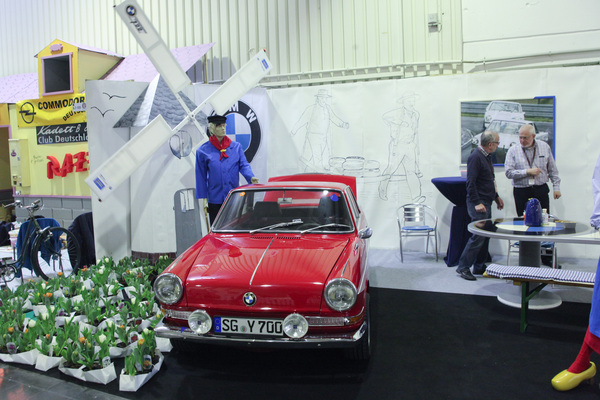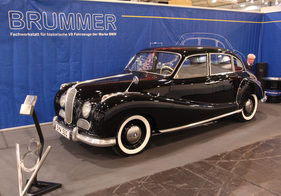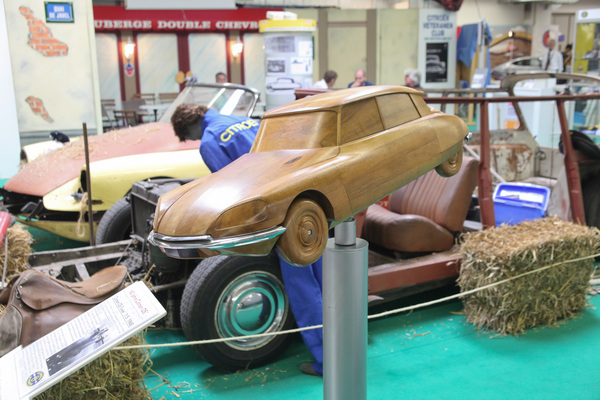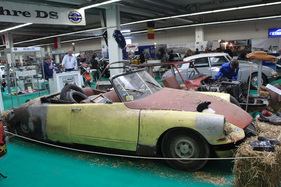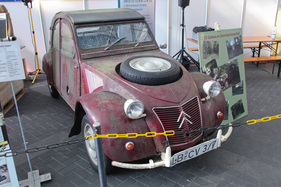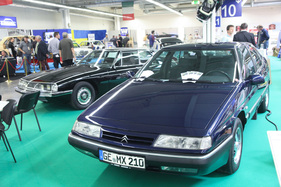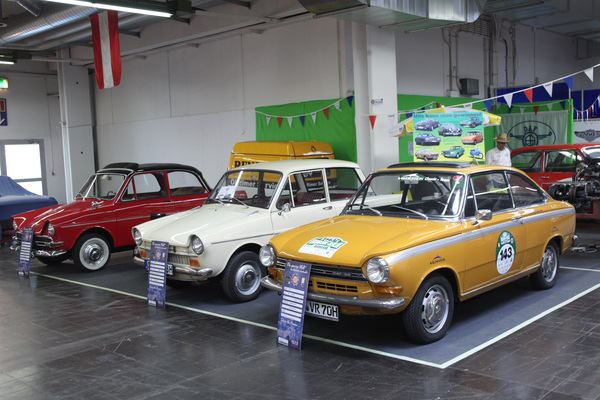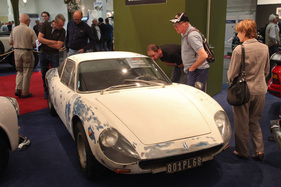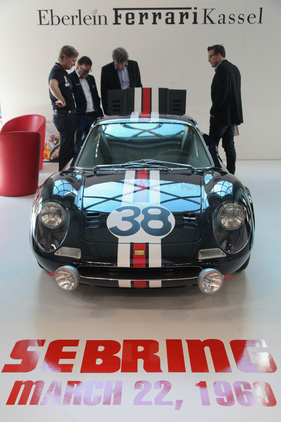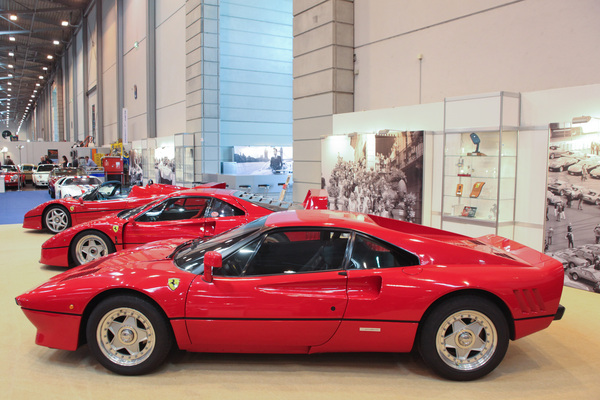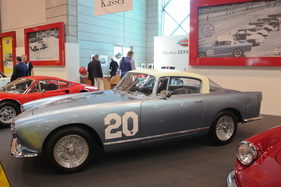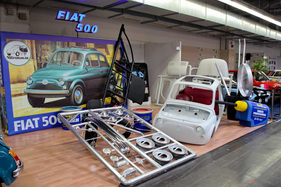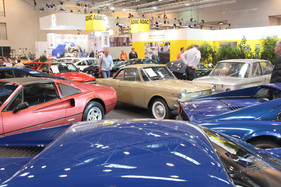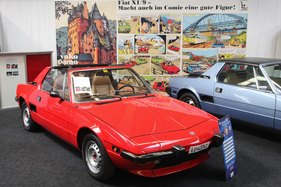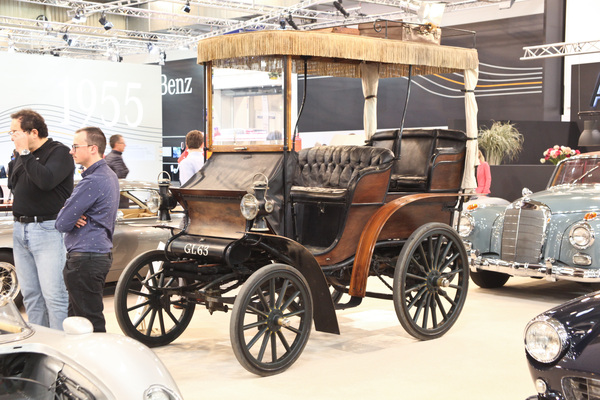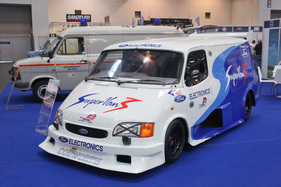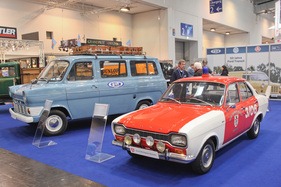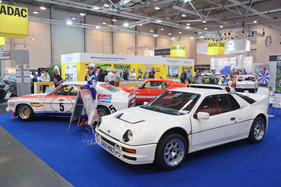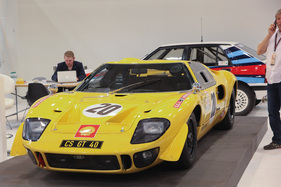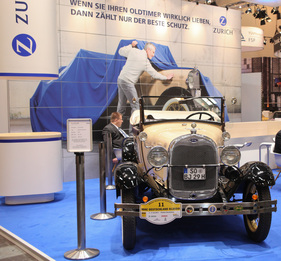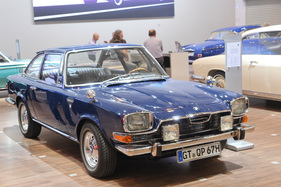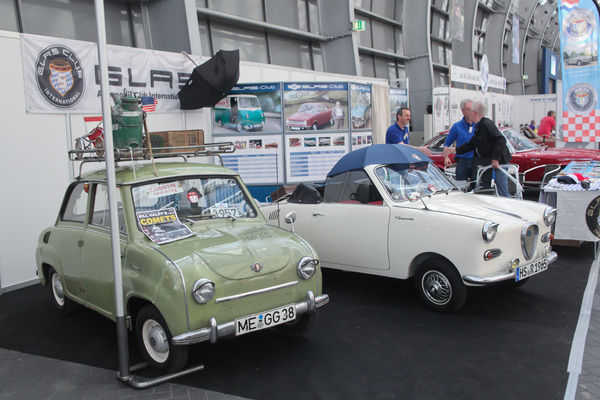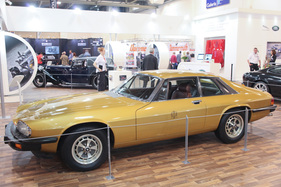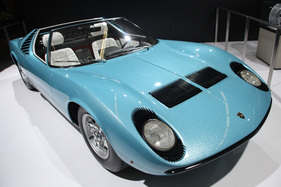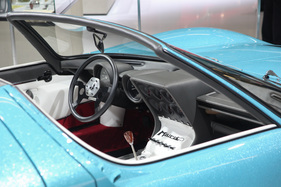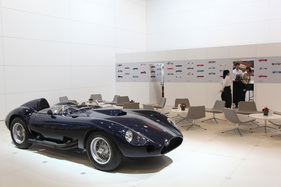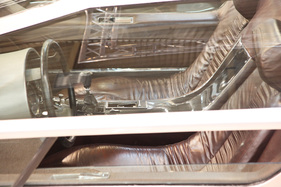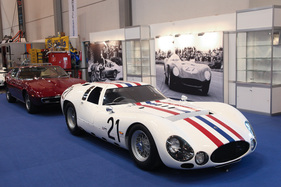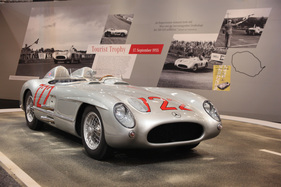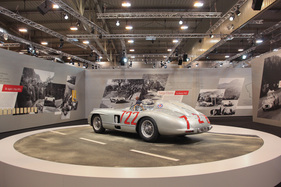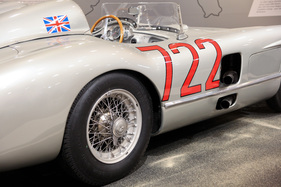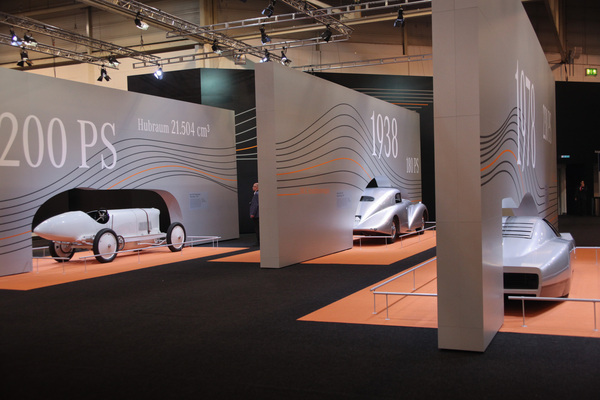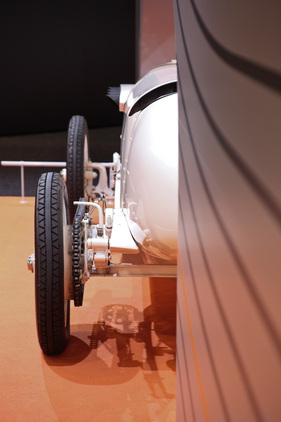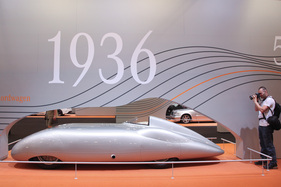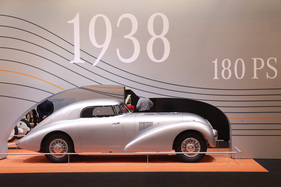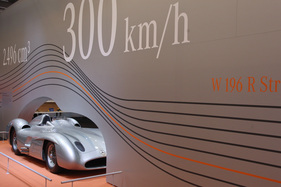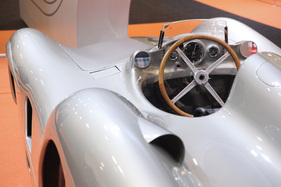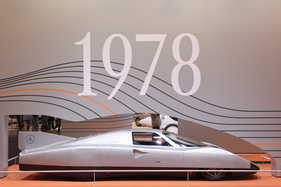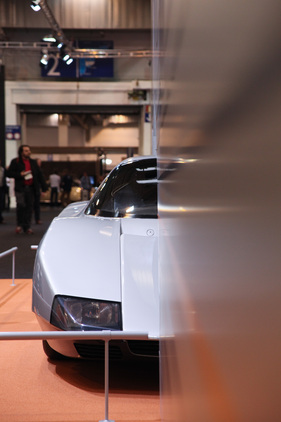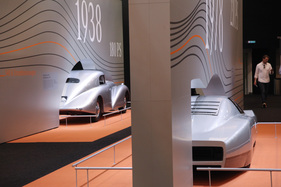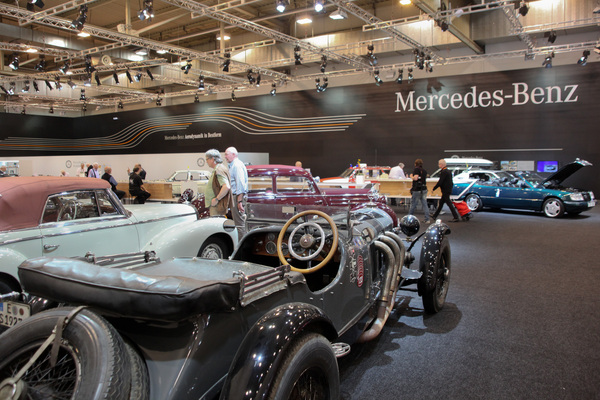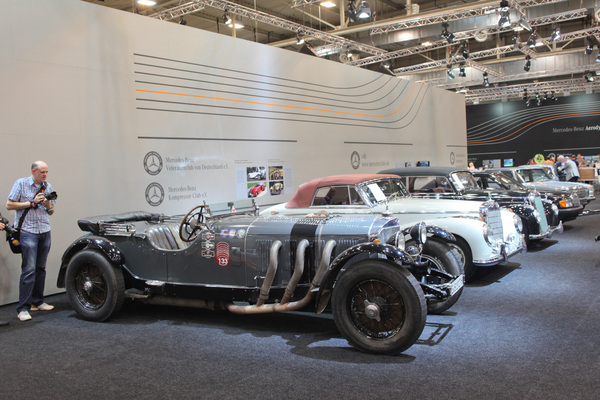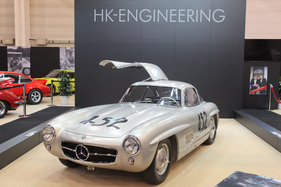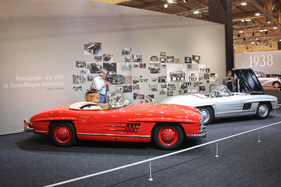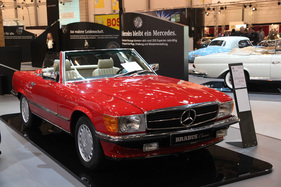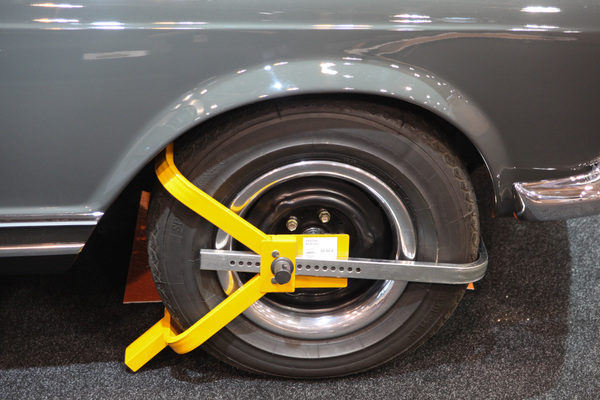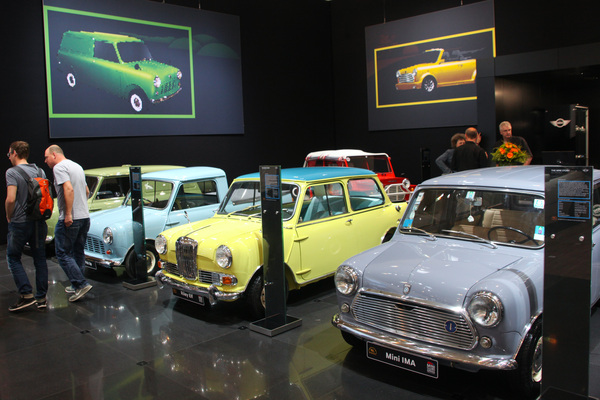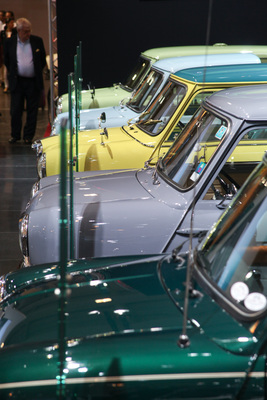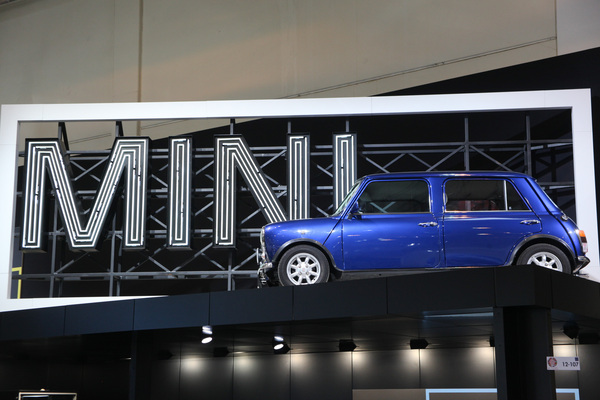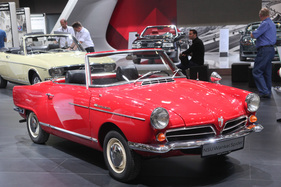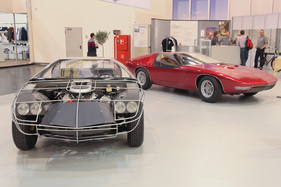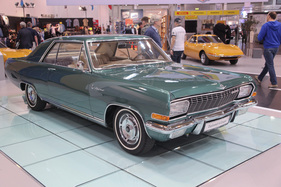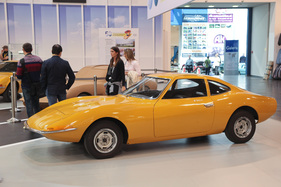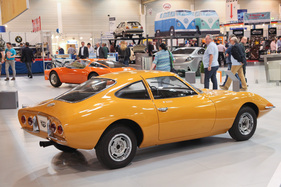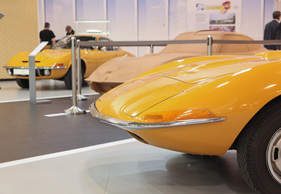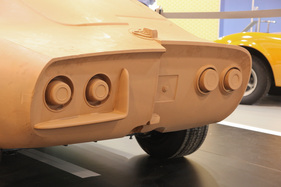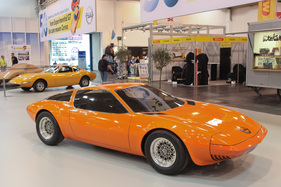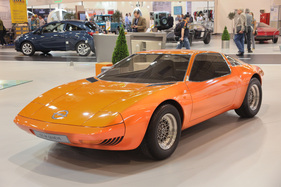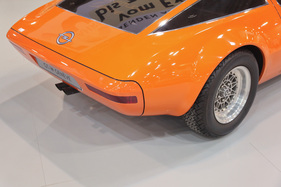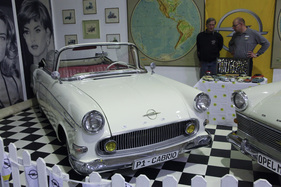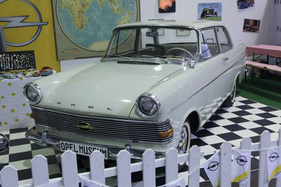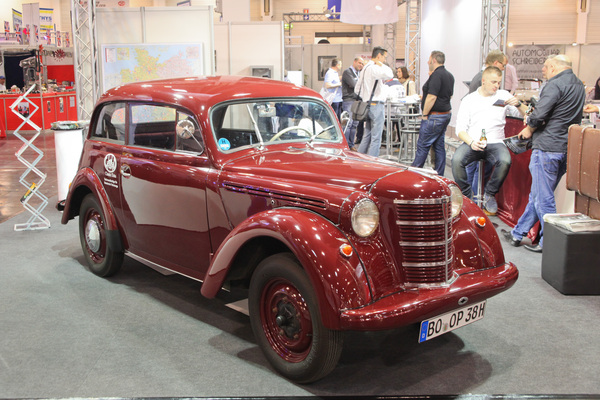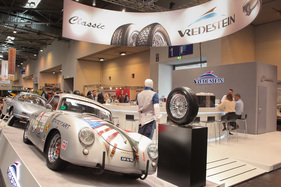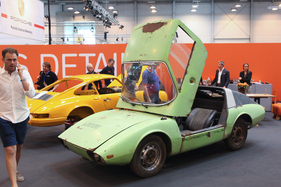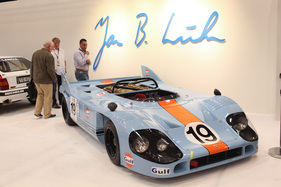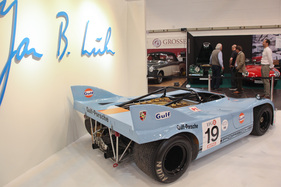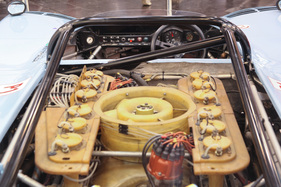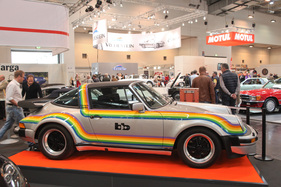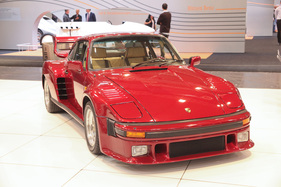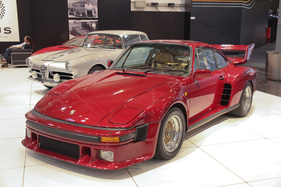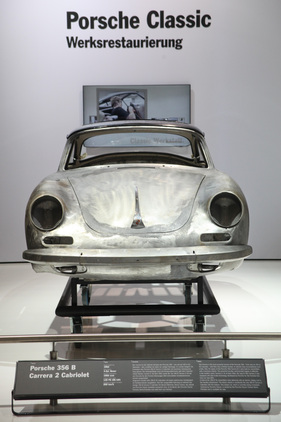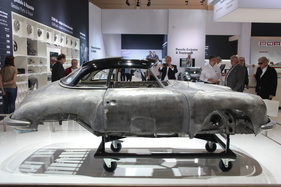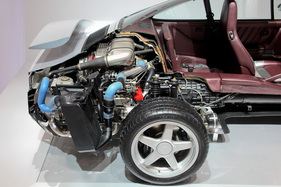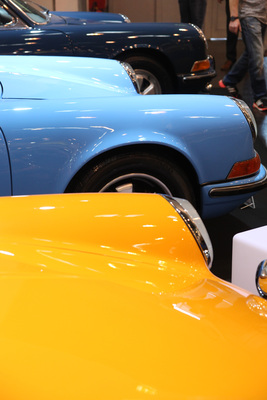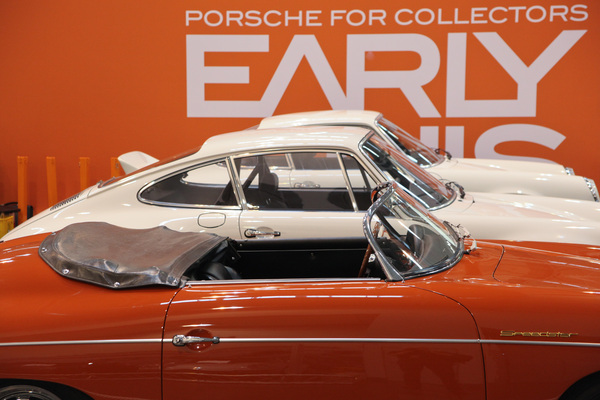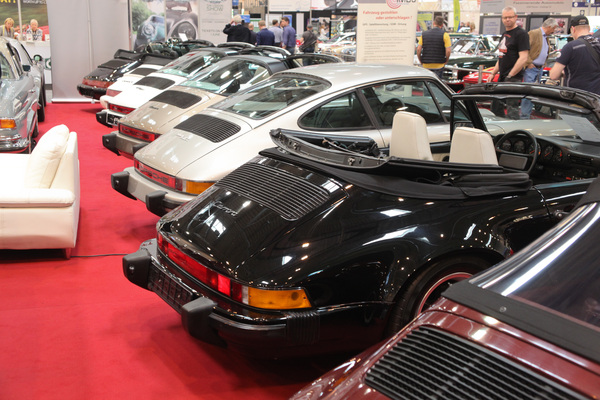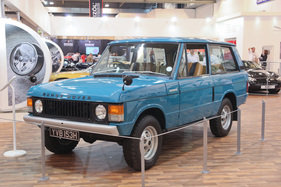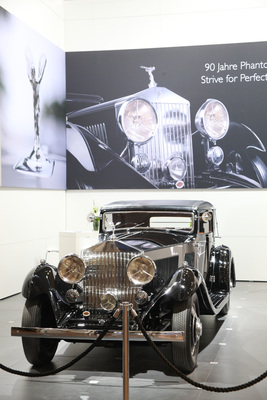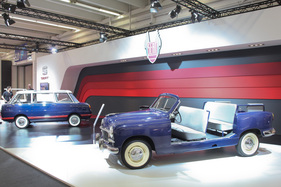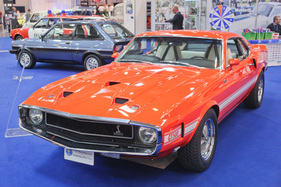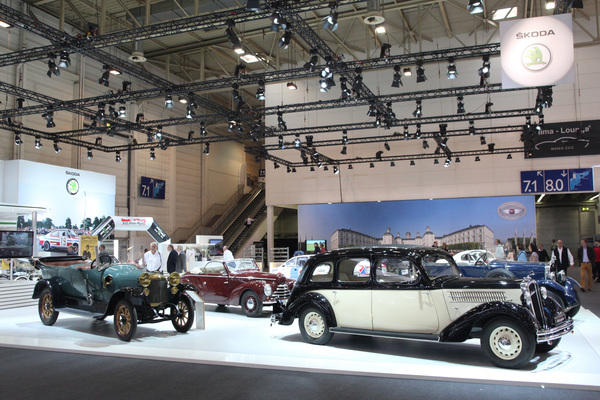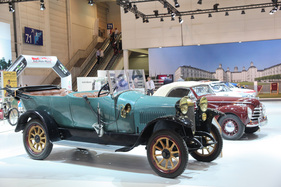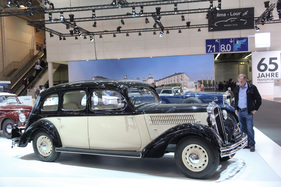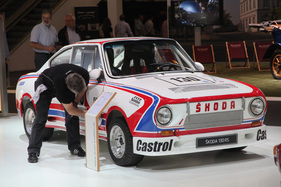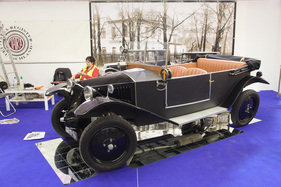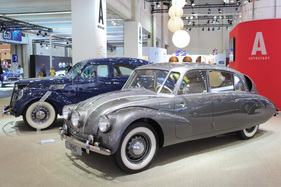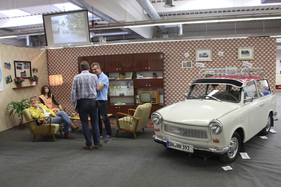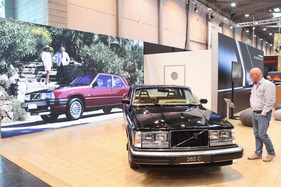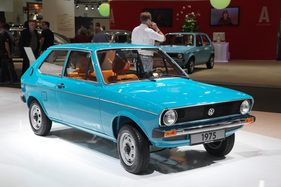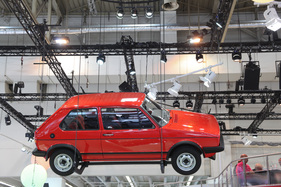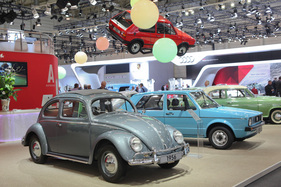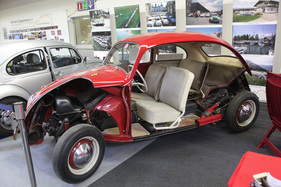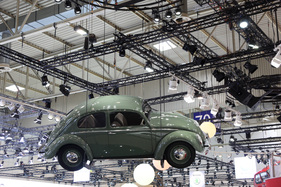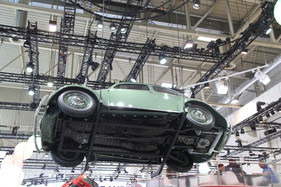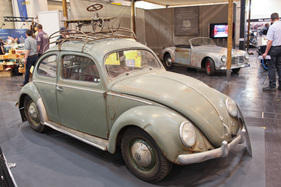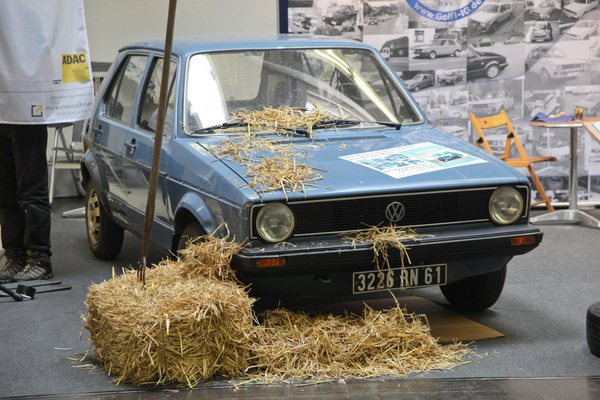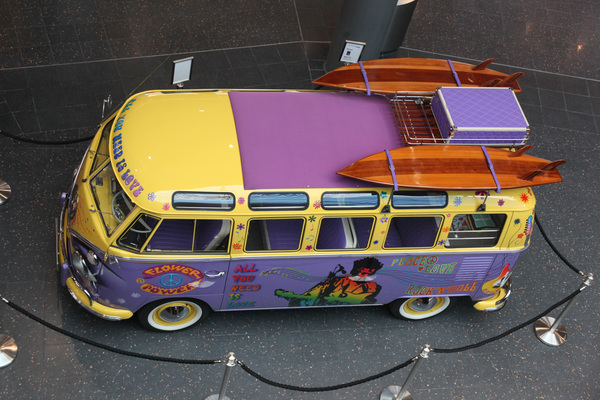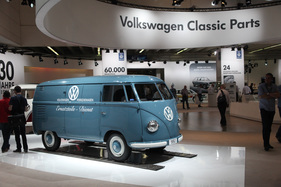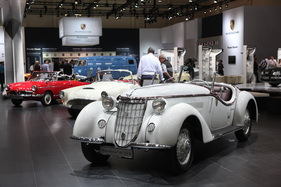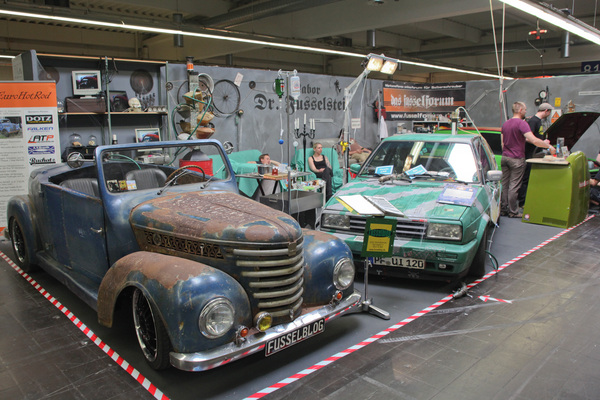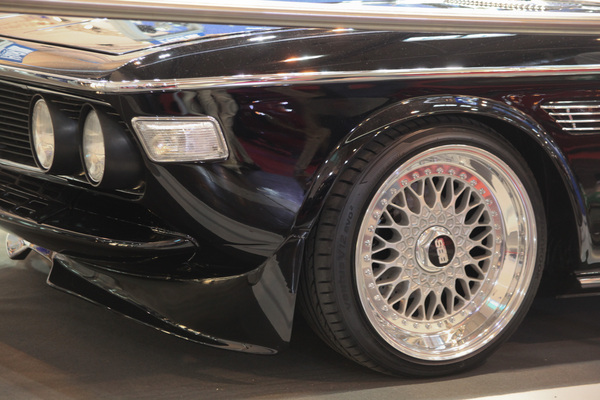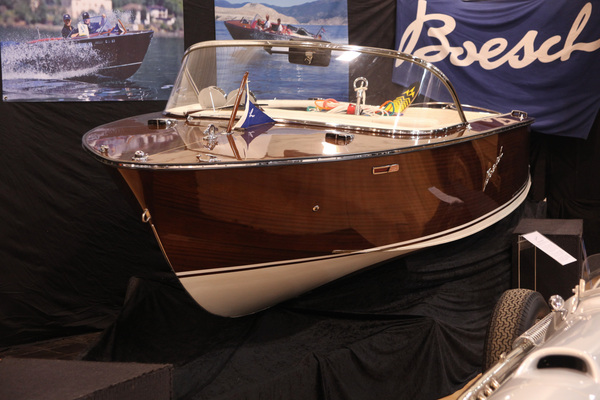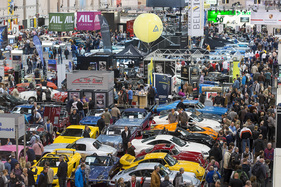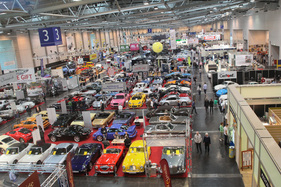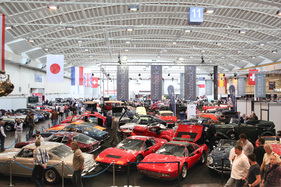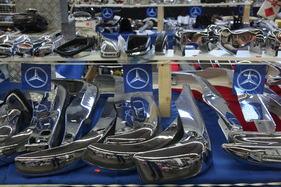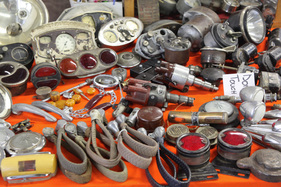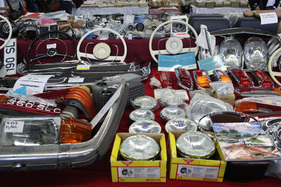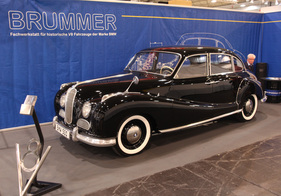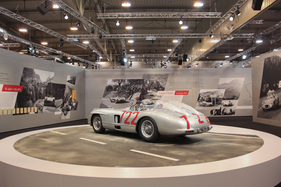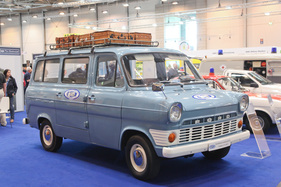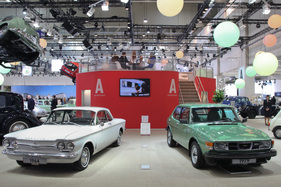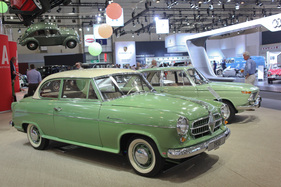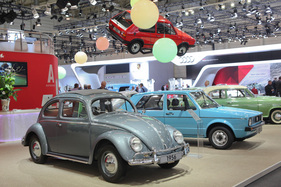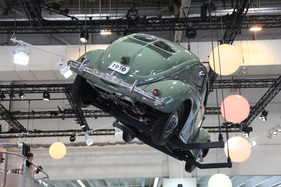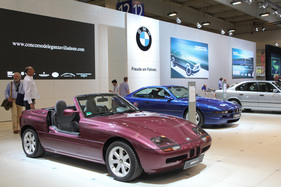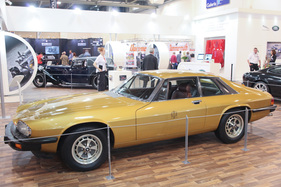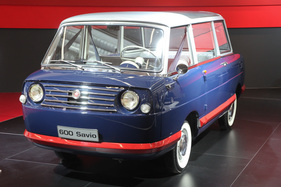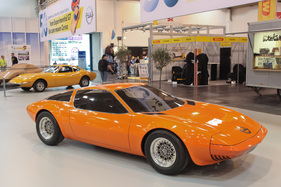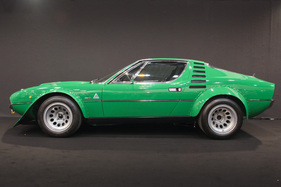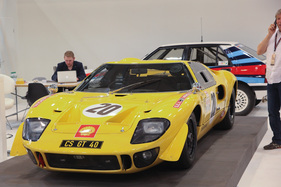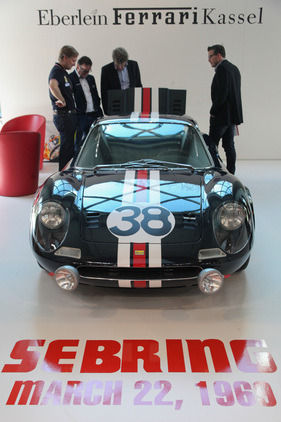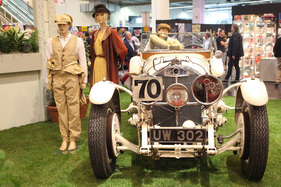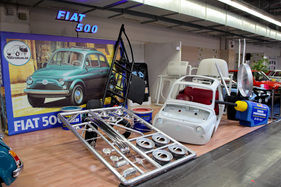For the 27th time, from April 15 to 19, 2015, fans of elegantly aged sheet metal met in Essen at the Techno Classica, which confidently calls itself the world fair for vintage, classic and prestige automobiles, motorsports, etc.
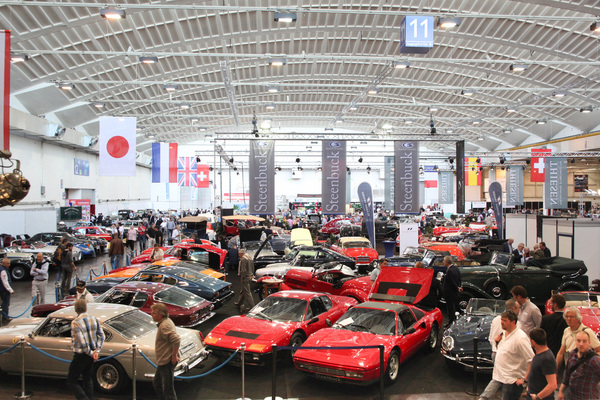
The success story is impressive. What began in 1989 with 250 exhibitors in a small area is now an international showcase of 1250 suppliers on 120,000 square meters, visited by around 190,000 interested visitors according to Siha.
Summit meeting of automotive passion
"Passion" was already a major theme at the press conference before the start of the show. Phrases such as "only passion is sustainable" were used, but Enzo Ferrari was also quoted as having said: "You can't describe passion, you have to experience it". Well, this naturally presents the chronicler of these lines with a difficult task.
However, as much as passion may be the focus, at the end of the day, the sales figures are what count for the trade fair organizers and exhibitors. Around 2500 vehicles were for sale in Essen, the average price was probably around 100,000 euros or even higher. An astonishing number of offers were presented with a "price on request" sign; transparency was certainly not the top priority here.
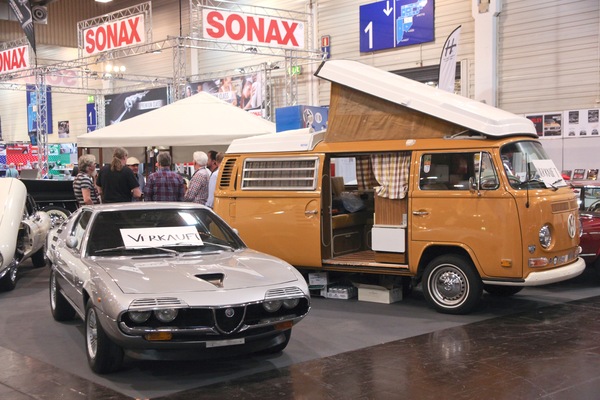
Anyone looking for an affordable car for the new season had to do some serious stalking. But despite the certainly demanding price level, some dealers, even if they had set up their cars in the less frequented Hall 1A (Top Salon Exklusiv), were able to write "sold" on vehicles as early as the first evening.
Big business
The latest results of the FIVA studies confirm once again that the classic and modern classic car scene is also big business. If each owner of one or more vehicles spends an average of €6562 per year, this adds up to an impressive total market of several hundred thousand enthusiasts.

And if around 680,000 of all the Porsches ever produced are still on the road as classic cars, then the spare parts business alone is a lucrative area of business. And then there are a whole host of services that revolve around it, all of which were able to present themselves in Essen.
Barn finds and 100-point restorations were used to illustrate the range of services offered by the industry.
Aerodynamics at the center
Once again, the stands of the classic car departments of the major car manufacturers were impressive.
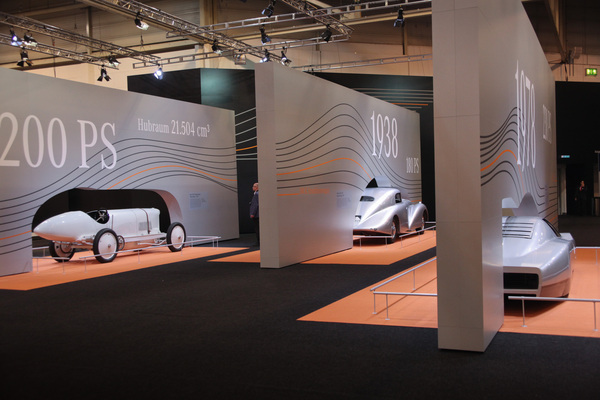
Mercedes-Benz was once again exceptional, taking the theme of "aerodynamics" as the starting point in 2015 to present special vehicles from Mercedes history, from the Blitzen-Benz to the W25 world record car, the 540K W29 streamliner, the W 196 R Streamliner and the C 111-III from 1978, which managed an impressive 327 km/h with just 230 diesel horsepower.
As an additional treat, the Stuttgart-based company brought the 300 SLR, which won the 1955 Mille Miglia with Stirling Moss and Jenkinson, to Essen.
The transporters are coming
In the immediate vicinity of rare Ferraris and Porsches, Ford and its clubs presented the Ford Transit in various versions, from the rustic first version, which celebrates its 50th birthday in 2015, to a brute-sounding Transit Supervan 3 with Formula 1 technology.
Also committed to commercial vehicles, Volkswagen presented the T1 Bulli, but also the T3 with Synchro 4x4 drive, which can look back on 30 years.
Special relationship boxes
The fact that even heavyweights in the industry, such as Volkswagen Autostadt, have not lost their passion was demonstrated by the instructive selection of "relationship boxes", each of which was embodied by two conceptually related cars. For example, a Chevrolet Corvair Monza Spyder stood next to a Saab 99 Turbo.
While the Corvair was the first mass-produced turbo vehicle, Saab can claim to have made successful steps in engine downsizing with the four-cylinder turbo.
A Borgward Isabella was placed next to the "New Class" from BMW (1500), an Autobianchi A 112 next to an Austin Mini. The Lincoln Zephyr, parked next to the Tatra 87, showed that the Americans were also making serious attempts at aerodynamic cars.
The presence of the VW Golf and the Beetle among the vehicles lined up in pairs was hardly surprising, and was even obvious given their affiliation with the Group.
However, the fact that two such cars were hovering eight meters above the visitors was a new experience.
Booming youngtimers
The major manufacturers are increasingly turning their attention to the fast-growing classic car segment. No wonder, since in Germany alone there are just over 300,000 classic cars (with H license plates) compared to an impressive 7.1 million vehicles over 15 years old.
BMW was able to show an impressive selection of younger vehicles, from the M3 to the Z1, alongside classics such as the 503 or the 3200 CS.
Jaguar presented an XJ-S 12-cylinder coupé and an XK8, Volvo dedicated its stand to Bertone creations (262 C and 780) and Volkswagen celebrated the 40th anniversary of the VW Polo with a variety of older and newer exhibits.
Audi also presented youngtimers in the form of the Audi (80) Cabriolet and the Audi TT Roadster. The entire presentation was dedicated to convertibles from around seven decades of the company's history, including the replica Audi Front Roadster and one of the surviving Karmann convertibles based on the first Audi 100.
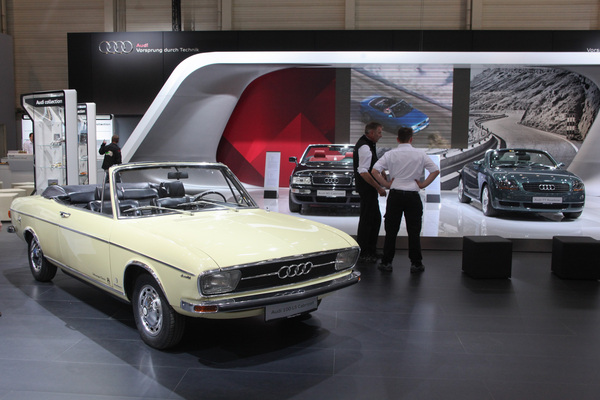
Skoda showed excerpts from 120 years of company history, from bicycles and motorcycles to the brute coupés 130 RS and 180/200 RS.
At Porsche, the technology milestone 959 paved the way for the Carrera GT and 919.
Rarities and trouvailles
Of course, well-known vehicles from the major German manufacturers also dominated in Essen, although the Porsche 911 and Mercedes-Benz 300 SL/190 SL seemed to be less omnipresent than two weeks earlier in Stuttgart.
Walking through the halls, there were automotive delicacies that you don't see every day. On the Seat stand, for example, a Seat 600 Savio front-wheel drive was parked next to a Seat 1400 Visitas, both unique and built for transporting factory visitors.
Opel presented design milestones from the work of its own Design Center. In addition to the Opel CD study, which had already caused quite a stir in Stuttgart, the Rüsselsheim-based company presented the Genève mid-Wankel-engined sports car, the Experimental GT and the Corsa Spyder, among other exhibits.
Lukas Hüni had a green Alfa Romeo Montreal in Group 4 livery from Autodelta to admire, Vredestein had one of the few surviving DKW 3=6 Monza, the Lamborghini stand had the only Miura Roadster, Jan B. Lühn the Ford GT40, which competed in the 1968 24 Hours of Le Mans.
One-offs such as the Lancia Gamma Olgiata, the Maserati Boomerang, the Maserati Tipo 151 racing car or the remains of an experimental sports car based on a Porsche 911 from 1964 made fans' hearts beat faster, as did a one-off Porsche 911 Turbo in 935 livery or the Alfa Romeo Giulia TZ2 prototype with aluminum bodywork.
For fans of the prancing horse, there was a Dino 206 GT from 1969, which successfully took part in the 12 Hours of Sebring that year, as well as a Ferrari 250 GT Boano from 1956 with Bahamas Speed Week history to inspect.
The Audi Ur-quattro, which Artz converted into a four-door saloon in the 1980s, was also exceptional, as was the Bugatti EB 110 Super Sport, which looked really good next to a Veyron.
86 years ago in Northern Ireland
The Siha special exhibition in 2015 was dedicated to the 1929 Tourist Trophy. This 600 km long handicap race was won by Rudi Caracciola in a Mercedes-Benz SS with an average speed of 117.22 km/h.
His winning car, together with six other participating vehicles from Alfa Romeo, Bentley, Bugatti, Lagonda and Stutz, commemorates this challenging race in the most adverse conditions.
Creativity almost without limits
Every year, the classic car clubs outdo each other with creative ideas for stand construction. The Fiat 500, which was presented as a 1:1 scale kit, the Trabant Universal in a replica of a contemporary living room, the tulip pinwheel scenery around the BMW 700 and the 60th birthday cake for the Fiat 600 were just some of the eye-catchers at the 2015 event.
The Allard Club, where two of the rare Palm Beach Cabriolets were on display, had less in the way of imaginative stand construction and more in the way of rare automobiles.
120,000 square meters, thousands of vehicles, brand, dealer and service provider presentations, a large club representation, parts, book, automobile and model car dealers, around 200,000 visitors from all over the world - Essen has once again confirmed itself as an important international meeting place for the classic car scene, and in a few years' time the new exhibition halls will create even better conditions for further growth.
